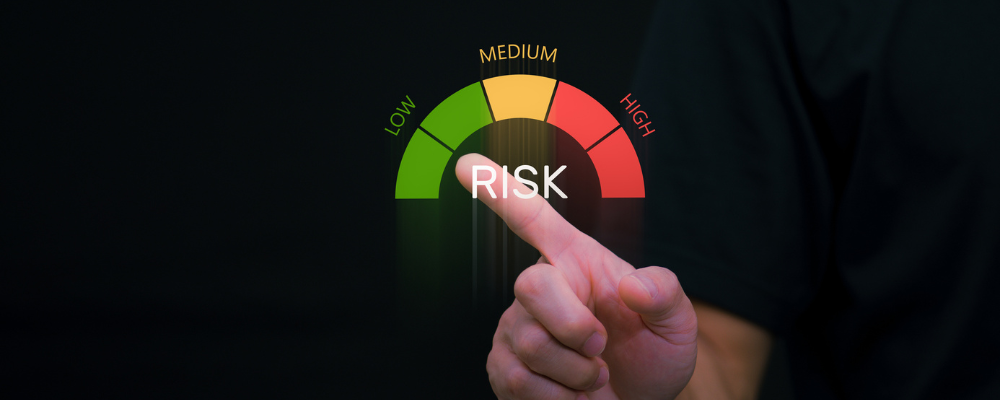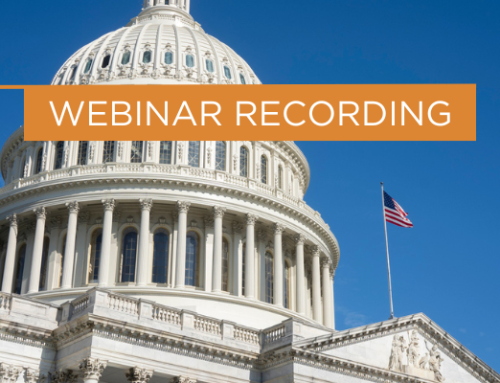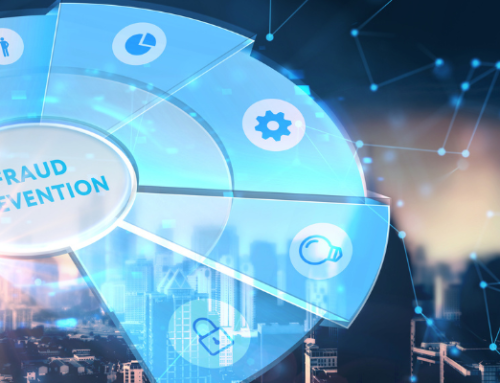What is the SOC 2 report, and Why is it Important for My Business?
SOC 2, developed by the American Institute of Certified Public Accountants (AICPA), is a framework and independent attestation report for service organizations that store, process, or handle customer data. The report demonstrates compliance with controls related to the five Trust Services Criteria (TSC): Security, Availability, Processing Integrity, Confidentiality, and Privacy. At a minimum, the Security TSC must be included, with management able to select additional criteria as appropriate.
A SOC 2 report is issued by an independent CPA firm after a thorough third-party audit. It verifies that the service organization has implemented internal controls aligned with the chosen TSC, providing clients and stakeholders with confidence in the organization’s control environment. Whereas a SOC 1 report evaluates controls relevant to financial reporting, a SOC 2 report focuses on operational and security risks beyond financial reporting. Think of a SOC 2 as a way for service organizations handling customer data to prove to their clients that they are taking the security and privacy of that data seriously.
Benefits of SOC 2
There are several benefits to conducting a SOC 2 examination beyond mere compliance. It builds trust with customers, suppliers, and stakeholders by demonstrating a commitment to risk management. The findings help identify and mitigate key outsourcing risks and uncover opportunities for operational improvement before issues escalate. SOC 2 enhances data protection, operational efficiency, and overall risk posture. Importantly, a SOC 2 report not only helps win new clients but also helps retain current clients when contracts require annual SOC 2 reports. Many business owners also pursue a SOC 2 in preparation for selling their business, as it demonstrates strong security practices to buyers and helps preserve company valuation by reducing the risk of a purchase price discount due to compliance gaps.
PBMares Advantage: PBMares clients benefit from tailored insights we provide during the SOC 2 process. Beyond issuing the report, we benchmark your controls against industry peers, highlight practical technology enhancements, identify cost-savings opportunities and process differentiators. This makes SOC 2 not just a compliance exercise, but a business value driver.
Who Typically Needs a SOC 2 Report?
The organizations that commonly seek a SOC 2 report are those involved in the processing, handling, or storage of customer data. These companies handle information for finance, healthcare, and technology businesses. Increasingly, consulting and professional services organizations are also pursuing SOC 2 reports to demonstrate the same level of rigor as SaaS companies, since they often handle sensitive client data and need to prove strong safeguards are in place.
There is no compliance requirement mandating a SOC 2 examination be conducted, however it is often requested by clients and partners to ensure there are adequate data protection measures. Beyond SaaS and consulting, SOC 2 is increasingly becoming a requirement for government contractors, quasi-government entities, and private equity portfolio companies. Federal funding, regulatory expectations, and M&A activity are driving these organizations to adopt SOC 2 as part of their growth, compliance, and exit-readiness strategy.
PBMares Advantage: PBMares specializes in serving mid-market companies and growth-stage SaaS providers where a SOC 2 report can be a differentiator in winning contracts. We also help consulting, government-facing, and investor-backed businesses leverage SOC 2 to meet due diligence requirements and protect valuation. Our team brings deep experience in healthcare, financial services, and nonprofit sectors which gives us context others may lack.
What are the Five Trust Services Criteria in a SOC 2 report?
These are the five criteria used when evaluating a service organization’s controls. They include Security, Availability, Processing, Confidentiality and Privacy.
- Security – Focuses on how well an organization protects both information and systems from unauthorized access, use, disruption, modification, or destruction. Several controls are tested in the operating environment to determine how effective protection measures are functioning. This is the only required criterion (also called the “common criteria”) for every SOC 2 report.
- Availability – Focuses on an organization’s ability to ensure systems and information are available for operations and use to meet objectives. Although not mandatory for every SOC 2 report, it is often included, especially for businesses providing continuous services where downtime would create significant issues.
- Processing Integrity – Focuses on ensuring system processing is complete, valid, accurate, timely, and authorized to meet entity objectives. It evaluates prevention and correction of processing errors, data accuracy, storage, and authorized modifications. This is most relevant for organizations that manage large volumes of data such as financial services, e-commerce, or SaaS platforms.
- Confidentiality – Evaluates how well an organization protects confidential information. It covers policies for restricting access, secure disposal, and protection against unauthorized use or deletion. This criterion is especially useful for organizations handling sensitive information such as Intellectual Property, passwords, financial information, or proprietary business information.
- Privacy – Evaluates how well an organization protects Personally Identifiable Information (PII). It addresses proper handling of personal information, transparency and consent, secure disposal, access and update rights, and monitoring for compliance. Examples of PII include names, addresses, contact information, Social Security Numbers, and medical or financial data.
PBMares Advantage: While only Security is required in every SOC 2 report, PBMares works with management to analyze client contracts, regulatory expectations, and the scope of services to determine which additional Trust Services Criteria are most applicable. We also map SOC 2 criteria to other frameworks such as HIPAA, ISO 27001, NIST CSF, and CMMC, and contextualize each TSC for industry relevance (i.e. Availability for SaaS uptime, Privacy for healthcare, Confidentiality for fintech/IP). This ensures your SOC 2 report aligns with the expectations of customers, regulators, and potential investors.
What are the Best Practices for Ensuring Privacy and Confidentiality?
Implementing Strong Data Governance Policies
To uphold privacy and confidentiality, service organizations must implement strong data governance policies. These policies should outline how data is collected, stored, processed, and shared within the organization. A comprehensive data governance framework helps ensure that privacy and confidentiality are maintained throughout the data lifecycle, reducing the risk of unauthorized access or disclosure.
Conducting Regular Risk Assessments
Regular risk assessments are vital for identifying potential threats to privacy and confidentiality. These assessments should evaluate both internal and external risks, including those posed by third-party vendors. By identifying vulnerabilities and implementing appropriate controls, organizations can proactively address any weaknesses in their data protection practices.
Training and Awareness Programs
Employees play a crucial role in maintaining privacy and confidentiality. Therefore, it is essential to conduct ongoing training and awareness programs to educate staff on the importance of data protection and their responsibilities. These programs should cover topics such as recognizing phishing attempts, securing workstations, and following proper data handling procedures.
Leveraging Advanced Security Technologies
In addition to policies and training, organizations should leverage advanced security technologies to protect sensitive information. Technologies such as encryption, multi-factor authentication, and intrusion detection systems can provide additional layers of protection, making it more difficult for unauthorized individuals to access confidential data.
Ensuring Third-Party Compliance
Given the risks associated with third-party vendors, it is crucial to ensure that partners comply with the organization’s privacy and confidentiality standards. This can be achieved through due diligence during vendor selection, regular audits of vendor practices, and the inclusion of robust data protection clauses in contracts.
PBMares Advantage: Our team not only evaluates internal policies and technical safeguards, but also reviews your vendor contracts and risk management processes against SOC 2 expectations. We help clients integrate privacy and confidentiality controls into incident response playbooks and executive dashboards, ensuring leadership accountability and board-level visibility. By combining threat intelligence, AI-driven risk monitoring, and industry-specific regulatory knowledge (HIPAA, PCI DSS, NIST, Uniform Guidance), PBMares ensures your privacy and confidentiality practices are resilient, future-ready, and aligned with client and regulatory expectations.
What’s the difference between a SOC 2 Type I and a SOC 2 Type II report?
The primary difference between the two report types is the period covered. A SOC 2 Type I report provides assurance that certain criteria are met at a specific point-in-time, while a SOC 2 Type II report provides assurance that criteria are satisfied over a period (generally 3, 6, or 12 months).
- SOC 2 Type I – Focuses on the design of controls at a point in time. The audit examines whether the design of controls meets the selected TSC. Because they are point-in-time only, these reports can be completed more quickly and are typically less expensive. SOC 2 Type I reports are well-suited for startups, organizations entering new markets, or those needing to demonstrate compliance quickly to prospective clients.
- SOC 2 Type II – Evaluates both the design and operational effectiveness of controls over the examination period. The auditor tests whether the controls functioned as intended throughout. SOC 2 Type II reports are considered more valuable because they provide a higher level of assurance and demonstrate consistent performance of controls.
PBMares Advantage: We guide clients on when to use a Type I report as a stepping stone to Type II, building momentum and avoiding rework. For organizations under tight sales or contractual timelines, we help position a Type I as an interim assurance tool while preparing for a Type II. Our team leverages collaboration platforms like Fieldguide for real-time evidence tracking and report drafting, significantly reducing audit fatigue. We also tailor recommendations by industry, helping SaaS companies align with uptime SLAs, healthcare organizations address HIPAA overlap, and financial services firms meet vendor due diligence standards.
How Long is a SOC 2 Report Valid?
SOC 2 reports technically do not expire. However, they are generally considered valid for 12 months from the date of issuance. Most customers and stakeholders expect a new SOC 2 examination annually to ensure controls remain current and aligned with established standards. An outdated report can create doubt about whether controls are effective, potentially diminishing client trust and slowing down contract renewals or sales cycles.
PBMares Advantage: We help clients stay ahead by maintaining a proactive SOC 2 renewal calendar and sending quarterly updates on evolving AICPA and regulatory guidance. Our team also advises on aligning SOC 2 timing with contract cycles, board reporting, and investor due diligence, so the report always supports business strategy. This ensures you never risk relying on an outdated report and that your SOC 2 continues to be a tool for growth, not just compliance.
What are the Steps to Achieve SOC 2 Compliance?
Embarking on the path to SOC 2 compliance may seem daunting, but with a structured approach, it can be seamlessly integrated into your organizational workflow. Here’s a roadmap to help you get started:
- Conduct a Gap Analysis – Begin with a thorough assessment to identify areas where your current practices may fall short of SOC 2 criteria. This provides a clear understanding of what needs improvement.
- Develop and Implement Controls – Based on the gap analysis, implement the necessary controls and procedures to address deficiencies. This may involve enhancing existing protocols or introducing new ones to align with SOC 2 requirements.
- Engage for Assessment – Partner with our experienced professionals to conduct a comprehensive SOC 2 examination. Our expertise will provide you with a detailed report on your compliance level and areas for further improvement.
- Maintain and Improve – Treat SOC 2 as an ongoing program, not a one-time project. Regular monitoring, testing, and updating of controls ensures sustained compliance and business resilience.
As we navigate an era where data security is paramount, achieving SOC 2 compliance is no longer optional, it is essential. By aligning with the AICPA framework, companies can not only fulfill client security requirements but also strengthen competitive positioning in the market.
PBMares Advantage: We provide more than a roadmap. We deliver a hands-on partnership. Our team creates a readiness playbook tailored to your environment, conducts a mock readiness audit to surface issues early, and assigns a dedicated project manager to keep timelines on track. We also align SOC 2 efforts with your broader cybersecurity, regulatory, and growth objectives, so the work directly supports investor confidence, client acquisition, and operational efficiency.
What is the process for obtaining a SOC 2 report?
The SOC 2 report process involves several key steps:
- Step 1: Engage a CPA Firm & Conduct a Readiness Assessment – The process begins by selecting an independent, licensed CPA firm. During readiness, the scope of the SOC 2 report is determined (systems, services, and Trust Services Criteria), Section III (Management’s Description of Services) is drafted, the key control shell is mapped and finalized, and a test of at least one sample for each control is performed. This step establishes a clear baseline of where controls stand. If a company already has a SOC 2 Type II report and is switching auditors, the new firm will still perform procedures to gain comfort with Section III, management’s assertion, and the control framework in place. PBMares helps clients navigate this transition to ensure continuity of reporting, consistency in approach, and no disruption to customer or regulatory expectations.
- Step 2: Remediation Period – Following readiness testing, management addresses any items noted as “not implemented” or deficiencies. This remediation period allows the organization to close gaps before the formal SOC 2 examination begins, significantly improving the likelihood of a clean report.
- Step 3: Select the Reporting Window – Once remediation is complete, management and the auditor align on the type of report:
- Type I Report – Evaluates controls as of a specific “as of” date (usually month-end).
- Type II Report – Evaluates controls operating over a defined reporting period (commonly 12 months).
- Step 4: Audit & Reporting – The CPA firm conducts testing across the defined scope and reporting window, issues its opinion, and finalizes the SOC 2 report. The report includes the Independent Auditor’s Opinion, Section III (Management’s Description of Services), management’s assertion, and detailed test results.
PBMares Advantage: Unlike many firms that drop in only at the audit phase, PBMares works side-by-side with clients from readiness through remediation. We help draft Section III, finalize your key control shell, and perform sample testing early so there are no surprises. For companies switching auditors, we ensure a smooth handoff of prior SOC 2 work while preserving report credibility and stakeholder trust. Our readiness approach reduces audit fatigue, accelerates remediation, and sets management up for success. By leveraging collaboration platforms like Fieldguide, we streamline evidence collection and provide executive-level summaries that make your SOC 2 report a business development asset, not just a compliance deliverable.
What is the Role of a CPA in the SOC 2 Examination Process?
Certified Public Accountants (CPAs) play a critical role in SOC 2 examinations. Their responsibility is to provide an independent, objective evaluation of a service organization’s controls against the AICPA’s Trust Services Criteria. CPAs bring a deep understanding of attestation standards, independence rules, professional ethics, which are essential for conducting thorough and reliable examinations.
During a SOC 2 examination, the CPA evaluates the service organization’s controls and ensures that management’s description of services (Section III) and related assertions are fairly presented. The CPA’s independent opinion provides assurance to client, business partners, regulators, and investors that sensitive information is being managed in line with expectations.
PBMares Advantage: At PBMares, our SOC 2 teams go beyond traditional financial audit skillsets. Each engagement combines licensed CPAs with cybersecurity professionals, giving you expertise across both compliance standards and technical controls. This dual perspective ensures that our testing not only meets AICPA requirements but also provides actionable insights to strengthen your security posture. We also leverage industry specialization in healthcare, SaaS, financial services, nonprofits, and government contractors, so our recommendations are grounded in the realities of your sector. By blending independence with practical, sector-specific advice, PBMares delivers SOC 2 examinations that build trust while adding business value.
What Level of Detail is Included in a SOC 2 Report?
A SOC 2 report provides extensive information about a service organization’s control environment and alignment with the relevant Five Trust Services Criteria. The goal is to give customers, regulators, and other stakeholders assurance about how an organization manages, secures, and maintains data integrity. The report includes several key sections:
- Independent Auditor’s Report – Written by the CPA firm conducting the examination. It summarizes the scope of work, the reporting period, and the auditor’s opinion about whether controls are designed/operating effectively. Opinions may be unqualified (clean), qualified (exceptions noted), adverse (significant issues), or a disclaimer (insufficient evidence to conclude).
- Management’s Assertion – Authored by management, this statement affirms their responsibility for the system and the fairness of their description. It also asserts whether the controls are suitably designed and, in a Type II, whether they operated effectively throughout the period.
- System Description (Section III) – Provides a detailed overview of the system being evaluated, including components, boundaries, infrastructure, data flows, and key personnel. It also describes relevant policies, risk assessments, incidents, and changes during the period.
- Results of Testing – Often the longest section. It describes each control tested, the test procedures applied, and the results. Stakeholders can review the completeness, accuracy, and effectiveness of the control environment in detail.
- Other Information Provided by Management (Section V) – An optional section prepared by management. This section may include additional context such as descriptions of planned system changes, updates to policies and controls, or other information management wants users of the report to know. In addition, management may use Section V to provide responses to any exceptions identified in the testing results, offering readers context on remediation efforts already taken or underway. Importantly, this section is not covered by the auditor’s opinion, so it must be carefully drafted to ensure accuracy and avoid creating unintended liabilities.
PBMares Advantage: We also advise clients on the strategic use of Section V, helping management decide whether to include forward-looking information (such as upcoming technology or policy changes) and whether to provide responses to control exceptions noted in the report. Our guidance ensures that any additional context is framed responsibly, turning Section V into a communication tool that demonstrates transparency, remediation efforts, and a commitment to continuous improvement. This makes your SOC 2 report not only technically sound, but also a confidence-building asset for clients, regulators, and investors.
How long does a SOC 2 take and how much effort is required from our team?
The timeline for a SOC 2 examination depends on the organization’s readiness, the scope of services, and whether a Type I or Type II report is selected:
- Readiness Assessment & Remediation – Typically 2–3 months, depending on control maturity.
- SOC 2 Type I – Once remediation is complete, a Type I report can usually be issued within 4–6 weeks.
- SOC 2 Type II – Requires an operating period, most commonly 12 months, although first-time reports may cover shorter periods (3, 6, or 9 months). The report can be finalized shortly after the end of the selected period.
Client effort varies but generally requires 5–10 hours per week during readiness and evidence collection, with significantly less ongoing time once controls are embedded and operating consistently.
PBMares Advantage: We streamline the process with detailed project plans, collaborative tools like Fieldguide, and dedicated engagement managers. This minimizes disruption to your team while keeping the timeline on track.
How much does a SOC 2 cost?
The cost of a SOC 2 examination depends on factors such as:
- The number of systems and locations in scope.
- The number of Trust Services Criteria selected (Security is required; others are optional).
- The type of report (Type I vs Type II).
- Whether this is a first-time SOC 2 or a recurring engagement.
PBMares Advantage: We use a transparent, fixed-fee approach with “not to exceed” caps. Our scoping process ensures you only pay for what’s necessary, and our readiness work reduces surprises and hidden costs often encountered with other firms.
Can I share my SOC 2 report publicly?
SOC 2 reports are considered restricted-use reports. They are intended for customers, regulators, and business partners who need assurance about your controls, but they are not designed for public distribution. Most companies share SOC 2 reports under a nondisclosure agreement (NDA) or through secure data rooms.
Organizations that want a public-facing report can elect to issue a SOC 3 after completing a SOC 2 examination. A SOC 3 contains the auditor’s opinion but excludes the detailed test results, making it suitable for public posting on a company website. In addition, once an organization has successfully completed a SOC 2 examination, it may display the official AICPA SOC logo (badge) on its website and marketing materials to signal its achievement.
PBMares Advantage: We help clients maximize the business value of their SOC 2 report while protecting confidentiality. Our team advises on when to pursue a SOC 3 report, how to safely display the SOC 2 badge, and best practices for distributing SOC 2 reports under NDA. We also prepare customer-facing summary letters when appropriate and help integrate SOC reporting into RFP responses and sales conversations.
What are common pitfalls organizations face when pursuing a SOC 2?
Organizations new to SOC 2 often encounter these challenges:
- Waiting until a customer demands a SOC 2 report, leading to a rushed process.
- Underestimating the time required for remediation of control gaps.
- Treating SOC 2 as a one-time project rather than a continuous compliance program.
- Failing to engage senior leadership, leaving SOC 2 positioned as only an “IT initiative.”
PBMares Advantage: We coach clients to avoid these pitfalls by embedding SOC 2 into overall risk management and governance processes. Our proactive readiness and quarterly touchpoints keep you ahead of client requests, support executive engagement, and build a sustainable compliance program.
How does SOC 2 relate to other compliance frameworks (ISO 27001, HIPAA, PCI DSS, CMMC)?
While SOC 2 is based on the AICPA’s Trust Services Criteria, many organizations must also comply with other frameworks such as ISO 27001, HIPAA, PCI DSS, or CMMC. There is significant overlap between these standards, especially in areas like access control, incident response, encryption, and vendor management.
To address this, the AICPA allows for SOC 2+ reports, which integrate the Trust Services Criteria with other frameworks. For example, a SOC 2+ report can incorporate mapping to HIPAA safeguards, ISO 27001 controls, PCI DSS requirements, or CMMC practices. This approach provides one unified report that covers multiple frameworks, reducing duplicate audits and streamlining evidence gathering.
PBMares Advantage: We regularly assist clients in designing SOC 2+ reports that align with their contractual, regulatory, and industry requirements. By cross-mapping SOC 2 controls to other frameworks, we help clients reuse evidence, reduce audit fatigue, and satisfy multiple stakeholder expectations with one integrated assessment. This ensures efficiency while strengthening trust with customers, regulators, and investors.





